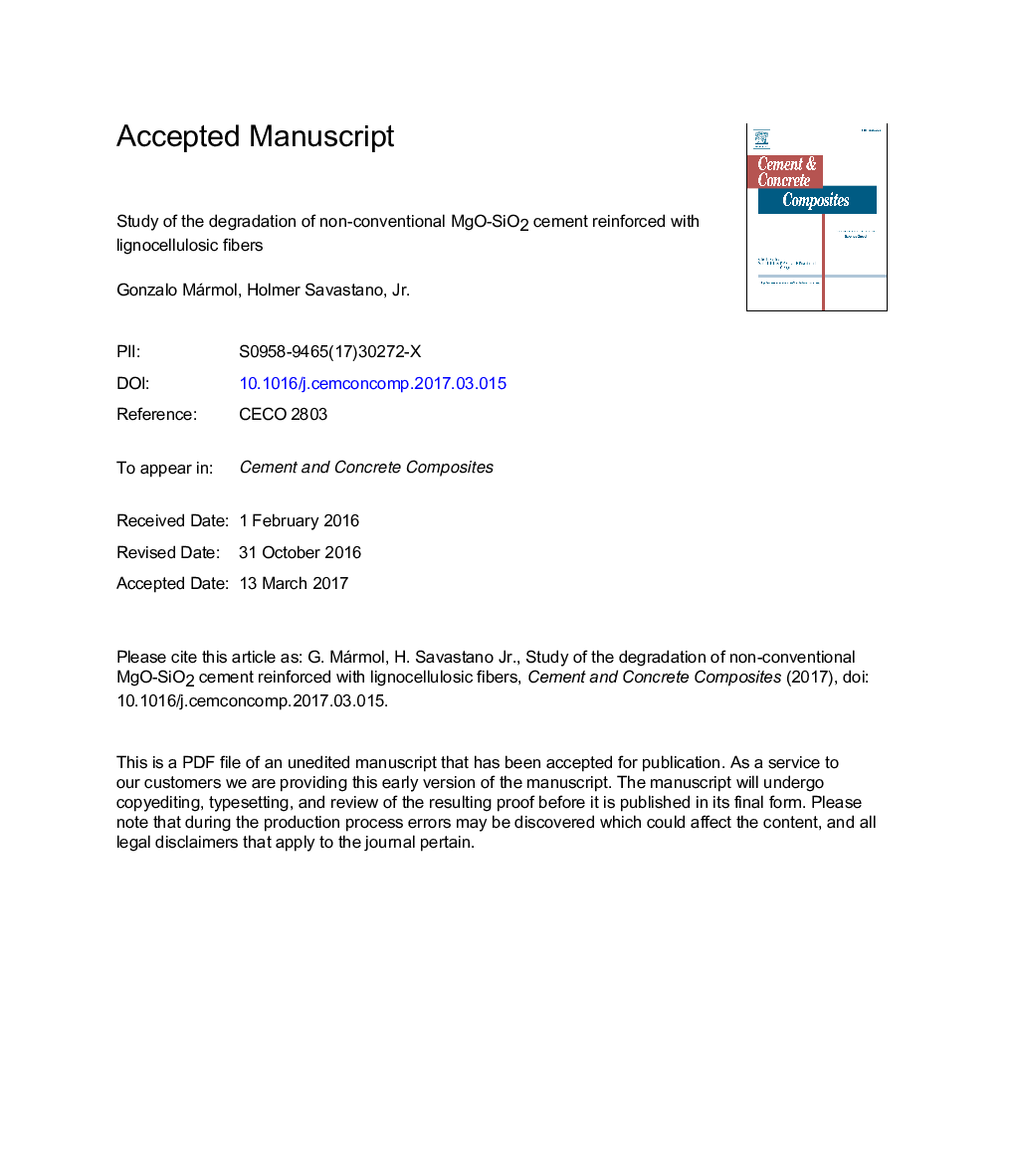| Article ID | Journal | Published Year | Pages | File Type |
|---|---|---|---|---|
| 5436875 | Cement and Concrete Composites | 2017 | 20 Pages |
Abstract
This paper assesses the use of low alkaline composites based on magnesium oxide and silica (MgO-SiO2) cement and reinforced with cellulose fibers for the production of thin elements to resist bending loads. The strategy adopted was to study the durability of lignocellulosic fibers in a lower pH environment than the ordinary Portland cement (OPC), by comparing the flexural performance of samples at 28 days and after 200 accelerated ageing cycles. Two types of vegetable fibers were used: eucalyptus and pine pulps. For both types of fibers, composites made out of MgO-SiO2 cement after ageing treatment show a better mechanical performance than OPC samples (modulus of rupture of â¼10.5 and 9Â MPa respectively). When used in MgO-SiO2 cement matrices, eucalyptus fibers offer excellent specific energy (SE) values (â¼5Â kJ/m2) compared to OPC samples in which SE drastically decreases after ageing from 4.97Â kJ/m2 to 0.14Â kJ/m2. The preservation of the reinforcing capacity of the composite materials after ageing was also proved by SEM techniques. In the light of the results, the use of MgO-SiO2 cements is an effective way to apply cellulosic fibers as reinforcement in fiber-cement products since no signs of degradation were found, even improving flexural properties over time.
Keywords
Related Topics
Physical Sciences and Engineering
Engineering
Industrial and Manufacturing Engineering
Authors
Gonzalo Mármol, Holmer Jr.,
